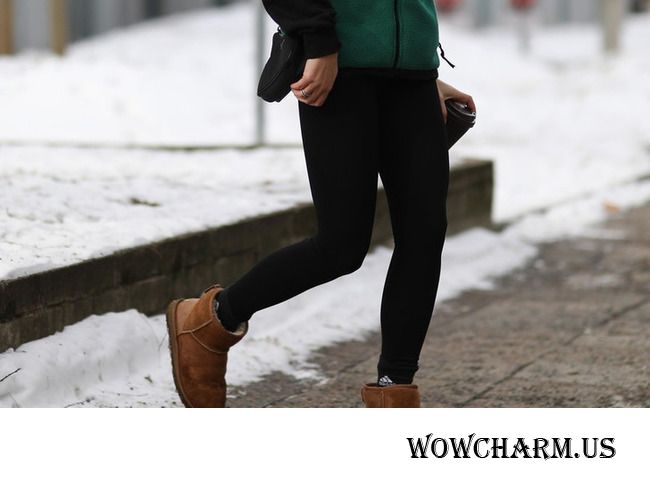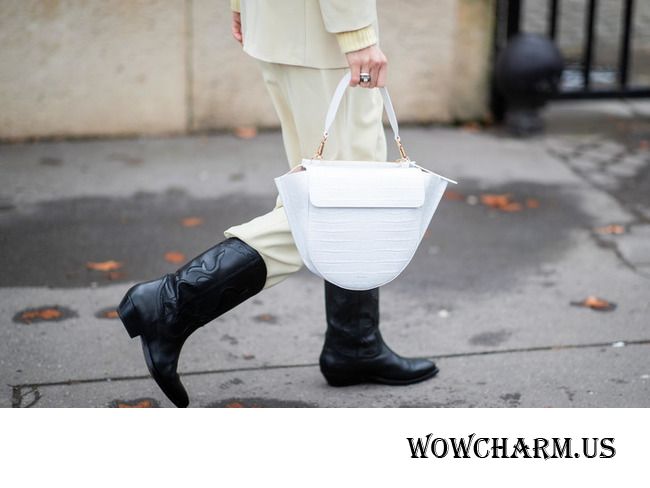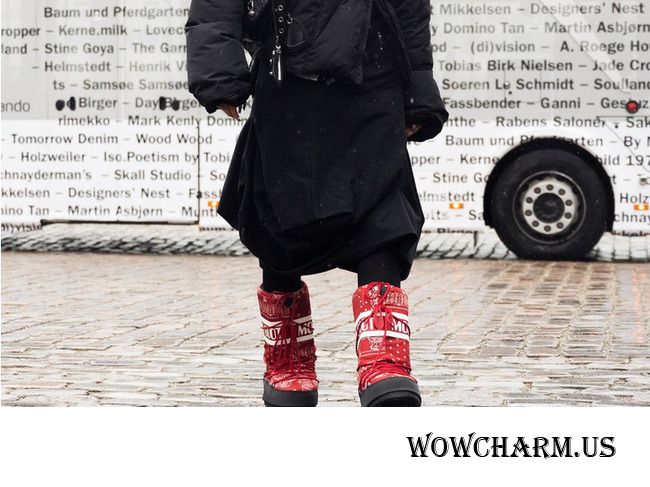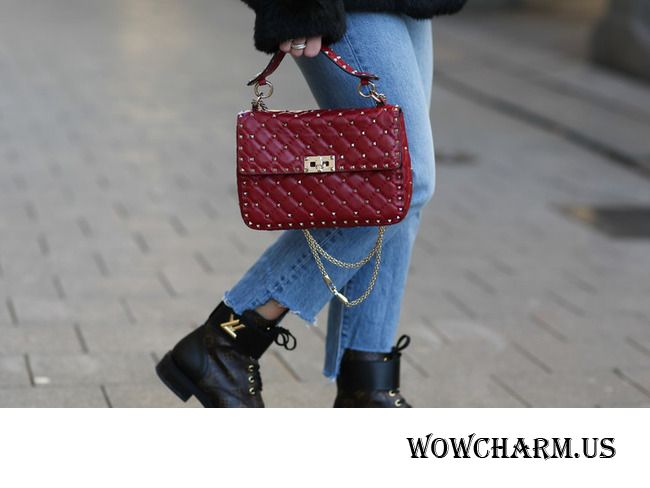5 models of winter footwear which can do much harm to health
On a high heel
Boots or boots on a heel not the most suitable footwear for winter. To wear heels which higher than 4 centimeters in principle are unhealthy and during the winter period it can be also is injury-causing.

The matter is that because of high heels the center of gravity is displaced. In the winter the surface more slippery and uneven therefore risk to sprain a leg, to slip increases. The heel at a subcollar of foot acts as the lever and stronger wraps it. It is fraught with muscle strain and dislocations. During the winter period the number of patients at surgeons and traumatologists many times increases. Falling on ice can lead to various injuries from simple bruises and grazes, changes and concussion.
With a slippery sole
When choosing footwear pay attention to structure of a sole. Those that from polyurethane, become "wooden" even at plus temperature and that can slides not only on ice, but also on well trampled down snow and even on a tile in rooms — until thaws. And at a temperature below-20 there are risks that it will crack at all.

That footwear did not slide, in its structure there has to be a rubber. When choosing winter boots or boots try to study composition of materials. For the cold period the sole from thermopolyurethane will also approach. Except material also the sole relief is important: it should not be smooth and sloping.
With a thin sole
Footwear without instep support with a thin sole will not amortize. It affects bone tissues of foot and can lead to its rasplastyvaniye. It is possible if there are a predisposition and excess weight. Consequences of wearing not shock-absorbing footwear it is necessary to treat in the surgical way. Besides, the thin sole does not protect from a frost and slush. There is a risk to have wet feet and to catch a cold.

From air-tight materials
Footwear from genuine leather passes air: it creates a comfortable microclimate, the correct temperature condition and does not break skin microflora. Synthetic materials, such as rubber or polyurethane, have no such properties. In order that synthetic footwear "breathed", on it there have to be inserts from textiles. Also air can pass through area of a lacing. Untight materials create greenhouse effect, legs in them sweat, overheat or, on the contrary, freeze. Bolonyevy boots and "dutik" also do not pass air. Long wearing such footwear has an adverse effect on health of legs and health in general.

Low or free
It is recommended to wear shoes with fixing of an ankle joint for prevention of injury of anklebones. High footwear interferes with dislocations at a foot subcollar therefore sneakers, low shoes and any other low footwear — not the best choice for the winter period. The heel has to be fixed too well that load of an ankle joint was distributed properly.

Ugg and high fur boots though made of the breathing tight material, it is worth carrying with care. The matter is that they do not fix an anklebone and a heel — the leg in them dangles why there is a constant muscular overstrain which is fraught with development of the tendinit — inflammations of a sinew. Besides, at this footwear, as a rule, a thin sole without instep support. Therefore ugg and high fur boots will approach rather on cases when you need to sit or stand long on cold, but not for walking on winter roads.
Boots or boots on a heel not the most suitable footwear for winter. To wear heels which higher than 4 centimeters in principle are unhealthy and during the winter period it can be also is injury-causing.

The matter is that because of high heels the center of gravity is displaced. In the winter the surface more slippery and uneven therefore risk to sprain a leg, to slip increases. The heel at a subcollar of foot acts as the lever and stronger wraps it. It is fraught with muscle strain and dislocations. During the winter period the number of patients at surgeons and traumatologists many times increases. Falling on ice can lead to various injuries from simple bruises and grazes, changes and concussion.
With a slippery sole
When choosing footwear pay attention to structure of a sole. Those that from polyurethane, become "wooden" even at plus temperature and that can slides not only on ice, but also on well trampled down snow and even on a tile in rooms — until thaws. And at a temperature below-20 there are risks that it will crack at all.

That footwear did not slide, in its structure there has to be a rubber. When choosing winter boots or boots try to study composition of materials. For the cold period the sole from thermopolyurethane will also approach. Except material also the sole relief is important: it should not be smooth and sloping.
With a thin sole
Footwear without instep support with a thin sole will not amortize. It affects bone tissues of foot and can lead to its rasplastyvaniye. It is possible if there are a predisposition and excess weight. Consequences of wearing not shock-absorbing footwear it is necessary to treat in the surgical way. Besides, the thin sole does not protect from a frost and slush. There is a risk to have wet feet and to catch a cold.

From air-tight materials
Footwear from genuine leather passes air: it creates a comfortable microclimate, the correct temperature condition and does not break skin microflora. Synthetic materials, such as rubber or polyurethane, have no such properties. In order that synthetic footwear "breathed", on it there have to be inserts from textiles. Also air can pass through area of a lacing. Untight materials create greenhouse effect, legs in them sweat, overheat or, on the contrary, freeze. Bolonyevy boots and "dutik" also do not pass air. Long wearing such footwear has an adverse effect on health of legs and health in general.

Low or free
It is recommended to wear shoes with fixing of an ankle joint for prevention of injury of anklebones. High footwear interferes with dislocations at a foot subcollar therefore sneakers, low shoes and any other low footwear — not the best choice for the winter period. The heel has to be fixed too well that load of an ankle joint was distributed properly.

Ugg and high fur boots though made of the breathing tight material, it is worth carrying with care. The matter is that they do not fix an anklebone and a heel — the leg in them dangles why there is a constant muscular overstrain which is fraught with development of the tendinit — inflammations of a sinew. Besides, at this footwear, as a rule, a thin sole without instep support. Therefore ugg and high fur boots will approach rather on cases when you need to sit or stand long on cold, but not for walking on winter roads.
Copy the code and insert into a window of creation of record on LiveInternet, previously having included the Source mode there.
HTML-code: 
|
|
| The BB code for forums: |
How will it look?
wowcharm.us → 5 models of winter footwear which can do much harm to health
| On a high heel Boots or boots on a heel not the most suitable footwear for winter. To wear heels which higher than 4 centimeters in principle are unhealthy and during the winter period it can be also is injury-causing. The matter is that because of high heels the center of gravity is displaced. In the winter the surface more slippery and uneven therefore risk to sprain a leg, to slip increases... Read more: |
| "Soon winter! What fur coat to choose? | | | The most beautiful and mad hats from denim" |
|
Other discussed materials:
It is better to burn down completely, than to become covered with dust)
And again an occasion to congratulate each other. With St. Valentine's Day! Let festively will be on heart and heat at heart.
We wish our Olesya Olesya 7777 happy birthday!
Tinned haricot corn salad
|









